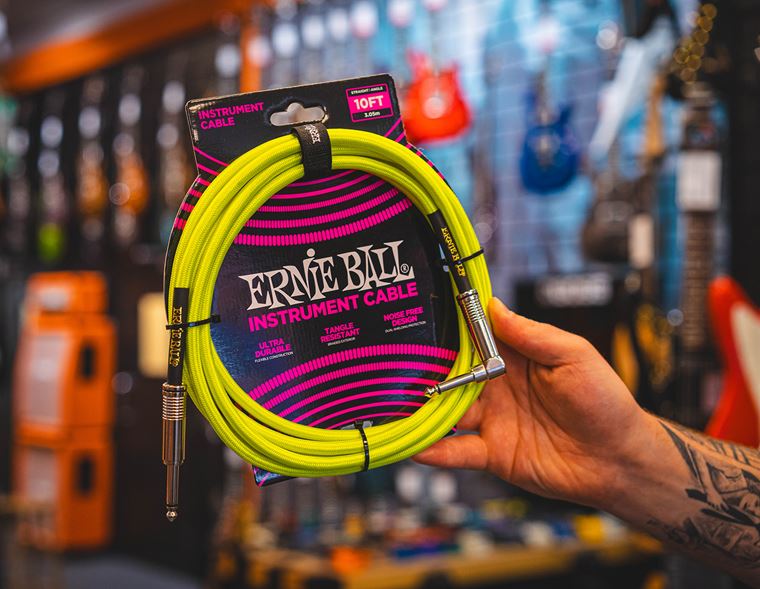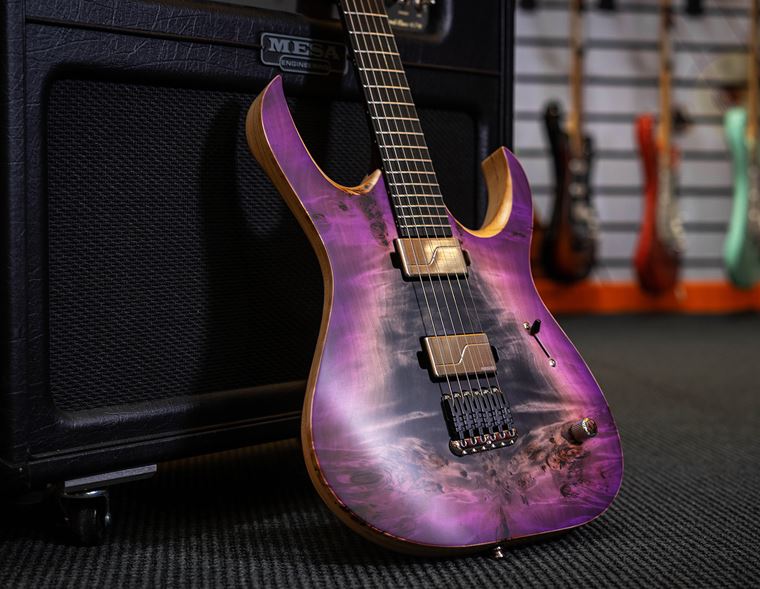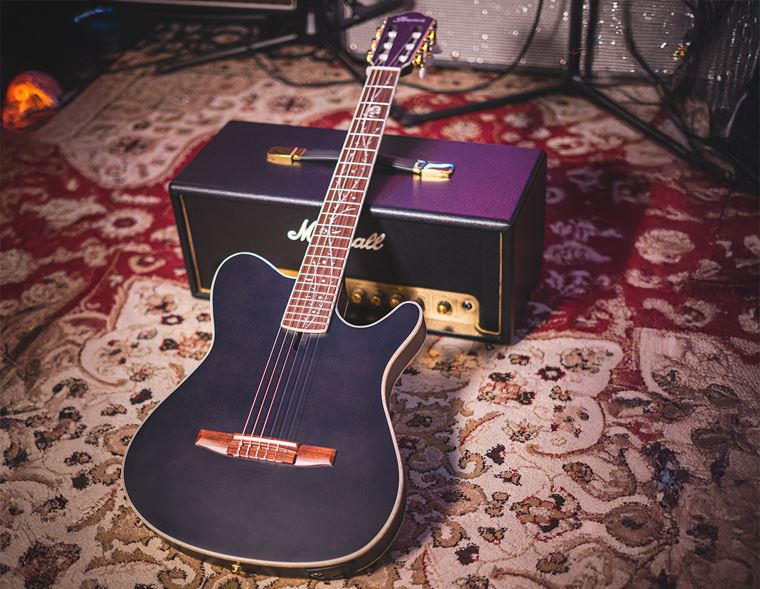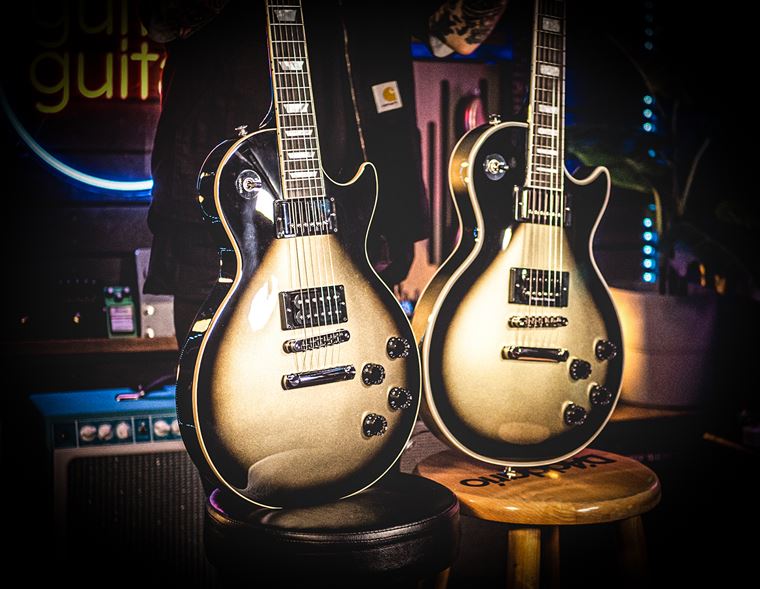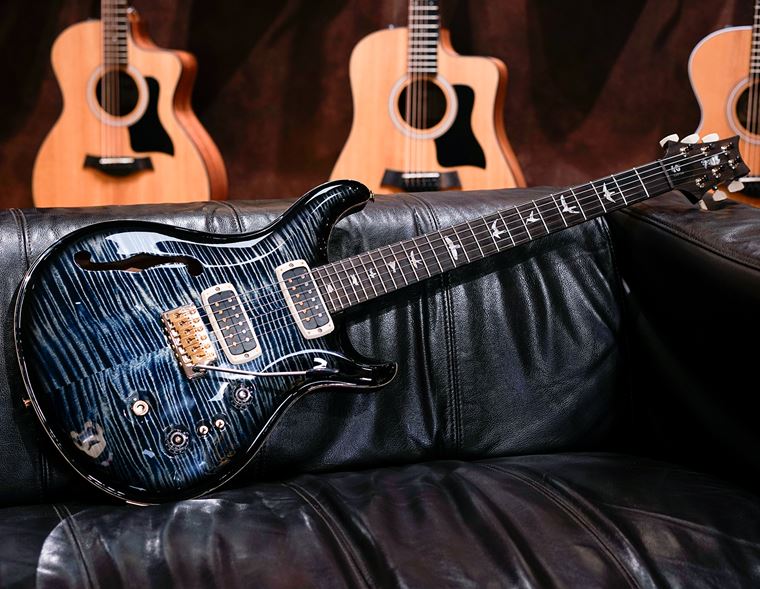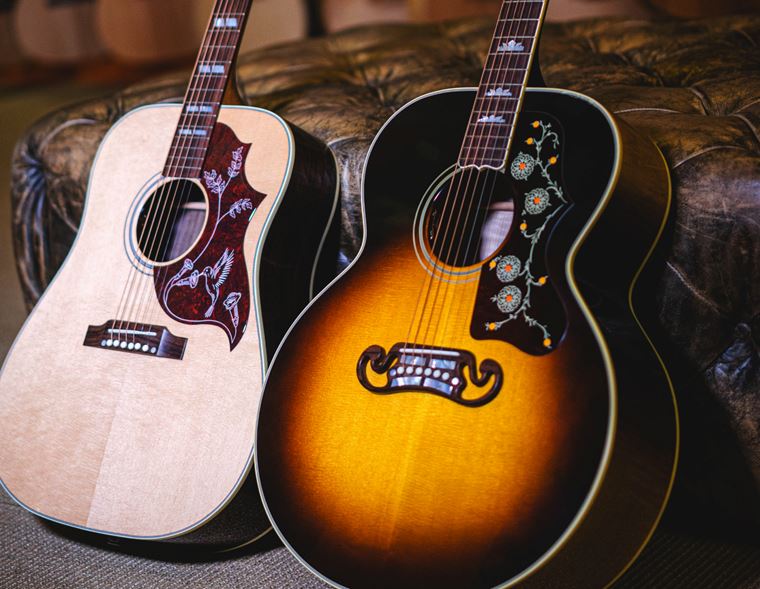Light vs Medium Guitar Strings: What Should You Use?
Light vs medium guitar strings - which guitar strings should you use? Have you just stuck to the same sets forever, or are you somebody who likes to change them around and experiment? If not, why not?
Guitar strings are our most direct link to our instrument: they are the objects we touch, move and manipulate in order to make all of the sounds happen. They are the direct channel between our musical intentions, the movement of our hands, and the sound that eventually makes its way back to our ears. Guitar strings are a significant, fundamental subject, so let’s talk a little more about them!
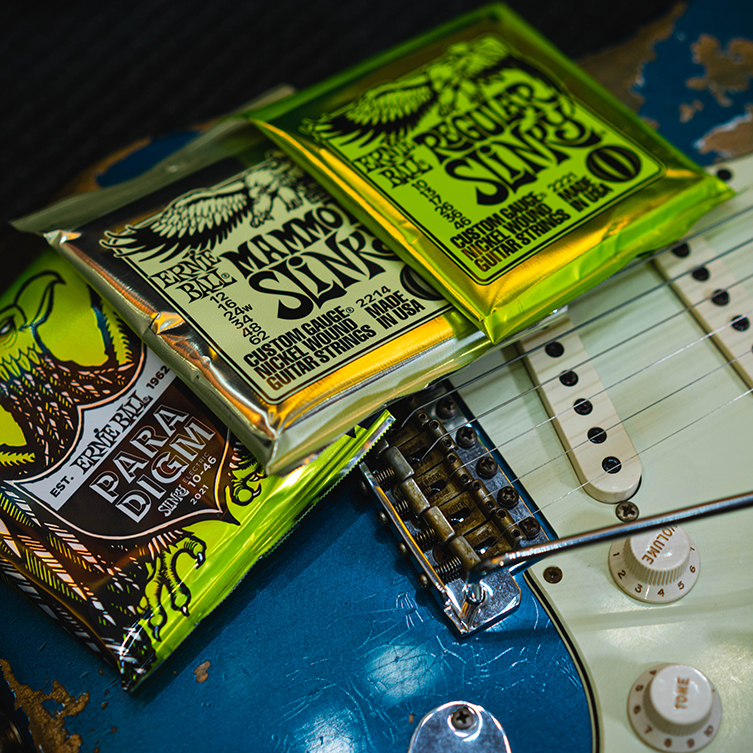
This article relates to both beginners and those with more experience. Today, we aim to explain a little about why you might want to choose a particular string gauge over another, depending on the instrument you’re playing and the styles you want to play on it. We’d reiterate our usual point of view here that there are no hard and fast rules to this, so so experimentation on your part will be as valuable to your process as any info we share here. That said, we’ve gto a fair amount of experience available on recall, so let’s get into it…
Disclaimer
Before we go any further, let’s be crystal clear on one thing: be careful with your guitars when making adjustments and don’t do anything crazy without taking the correct precautions. If your guitar has gauge 8 strings on it and you want to try gauge 11, you’ll definitely need to set the guitar up properly for that, or risk damaging it. Talk to a pro and make changes in small increments, in order to minimise pressure/tension changes. If in doubt, take it to a tech and heed their advice! They really do know best, okay? Right, onwards.
What is a String Gauge?
A string gauge is a term for the collected set of strings you’ll require to fully string a guitar. Generally, we are talking about six strings, and the gauge refers to their comparative lightness or heaviness.
For example, when talking about a set of electric guitar strings, we’d say that the following set are quite light: .009 .011 .016 .024 .032 .042. That’s high to low (or thin to thick), and measured in inches. These are referred to as ‘9s’ or ‘nines’.
A standard gauge, or medium set of guitar strings could be .010 .013 .017 .026 .036 .046, described as ‘10s’ or ‘tens’.
Heavy guitar strings could be the following: .011 .015 .022 .030 .042 .054. These would be a set of ‘11s’ or ‘elevens’.
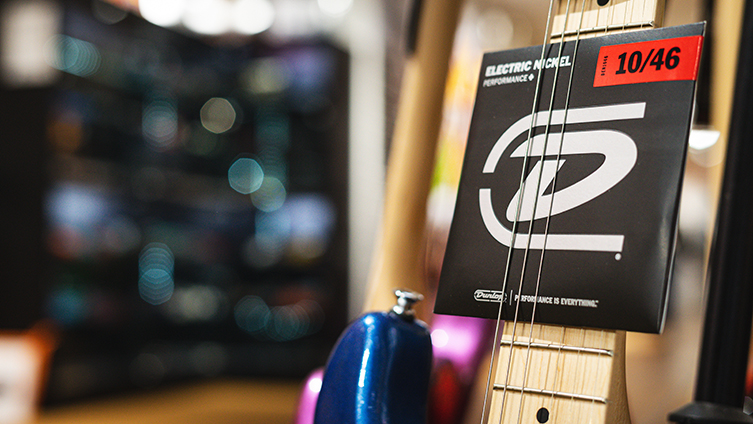
Now, there’s more to it than that, but in simple terms, we’re talking about those types of relative differences in string thickness. We use the lightest string in the set to name them, you’ll have noticed. This is true across the board: a set of 11s will always have an .011 as the lightest string, for example.
What’s the Difference Between Lighter and Heavier Guitar Strings?
When it comes to the thickness of a set of strings, we often go with advice that’s passed forward onto us from other players about what we should be using. We hear remarks about how heavier strings sound better due to there being ‘more metal’ and so on, but when do we ever actually compare these things? What are the real differences between lighter and heavier strings?
Okay, let’s look at this objectively. Firstly, are we talking about acoustic strings or electric strings? As you know, they are made from slightly different materials and to different relative thicknesses, so ‘light’ on an acoustic guitar can often mean ‘pretty damn heavy’ on an electric!
Acoustic Guitar Strings
Let’s take acoustic guitar strings first. Acoustic guitars use vibrations from the moving strings to ‘charge’ the guitar’s top and throw sound frequencies around inside the hollow body of the instrument. These frequencies are shaped by the guitar’s inner bracing and moved out through the soundhole, which is when you hear your notes.
For all of these reasons, you get a ‘bigger’ sound - particularly when strumming - when you use a thicker gauge of string. For acoustic guitars, the standard, normal string gauge would be .012”, or ‘gauge 12’. This refers to the lightest string in the set, which follows the convention we’ve already seen in the last paragraph with the 9s, 10s etc. In terms of the heaviest string in a set of 12s, well, it can differ from brand to brand but it’s generally around .052 or .053. We’d call this ‘light’ for acoustic guitars, believe it or not, but that’s only because of olden days tradition: it’s easily the most common acoustic gauge, so it’s more ‘standard’ than anything else.
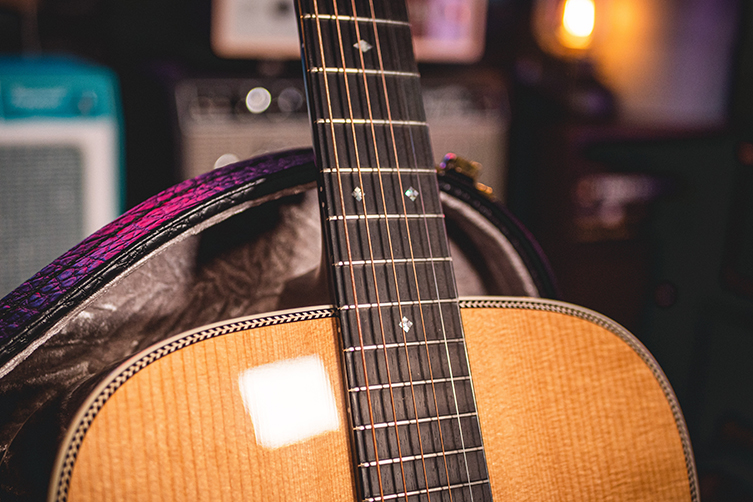
Either side of this gauge lies gauge 11 and 13. These days, you can go further in either direction, but for the purposes of explaining a situation, let’s stick with these main three gauges. Gauge 11 acoustic strings offer less tension and therefore less resistance to your fingers. These strings are easier to play on, and easier to bend, if you are interested in Bluesier styles. The downside is that your tone loses some strength, stridency and low end. Thinner acoustic strings can often sound accordingly thin, and that can either be something you’re fine with or an unacceptable tonal compromise; it’s very much up to you and your sensibilities.
Gauge 12 strings, on the other hand, offer a stiffer, less forgiving feel under the fingers. They hurt a little more to play, but the payback is a larger, deeper, richer tone. With acoustic guitars, it does seem to be very much the case that size matters! If you are mainly a chordal strummer, then going heavier with your acoustic strings will give you the loudest, richest possible sound.
If you are someone who plays in a contemporary style with lots of altered tunings and percussive taps, you may want to rethink your string game: modern master Jon Gomm uses a custom set that runs from .014-0.68!
Electric Guitar Strings
Interestingly, those laws of physics we just mentioned there do not apply quite so obviously to electric guitars. Whilst yes, heavier string gauges will result in a ‘bigger’ sound, these things are so much more relative to other factors with electrics. Amplification is the obvious one, but you also have things like volume, guitar body style (solid or hollow etc) and whether the guitar has any kind of tremolo system. These considerations all weigh in on the debate here, so don’t just apply what you’ve learned with acoustics!
Simply put, electric guitars will almost universally come from the factory or workshop strung with gauge 9 or 10 strings. Gauge 9 strings are a good safe bet for almost every electric guitar style until: A) you realise they feel flimsy and actually require a heavier feel, or; B) you keep breaking strings. Gauge 9s work well with tremolo units (particularly locking tremolos such as the Floyd Rose), and are able to be bent easily, so lots of shreddy lead players love 9s.

Gauge 10 strings might only be fractionally heavier, but your hands will definitely notice the difference! 10s are standard on many guitars these days because there is the perception of improved tone, along with slightly better tuning stability in many cases. As we’ll see, this really is more about perception than fact, but the majority of players use gauge 10-46 strings, with hard rockers opting for the heavy bottom 10-52 sets.
Rule Breakers
At this juncture, we feel compelled to call out a few truths here. Yes, Stevie Ray Vaughan’s guitar sound was ace and he used a set of 13s, which is pretty hardcore when you consider that in relation to his playing! But then, Billy Gibbons has one of the most coveted tones in the world and he strings his Pearly Gates Les Paul with GAUGE SEVEN STRINGS! By our previous logic, his tone should be awful but Rev Willy instead makes it sound glorious.
BB king? Gauge 8. Brian May? Gauge 8. Tony Iommi also used stupidly light strings, but then his fingers had been sawn off in an accident and he replaced the tips with terrifying pieces of rubber, so he’s something of an anomaly whichever way you look at him. The point is, these players have broken the rules and achieved godzilla-sized tones with spaghetti strings. So, if you really don’t like the feel of heavy strings, don’t use ‘em! These guys don’t!
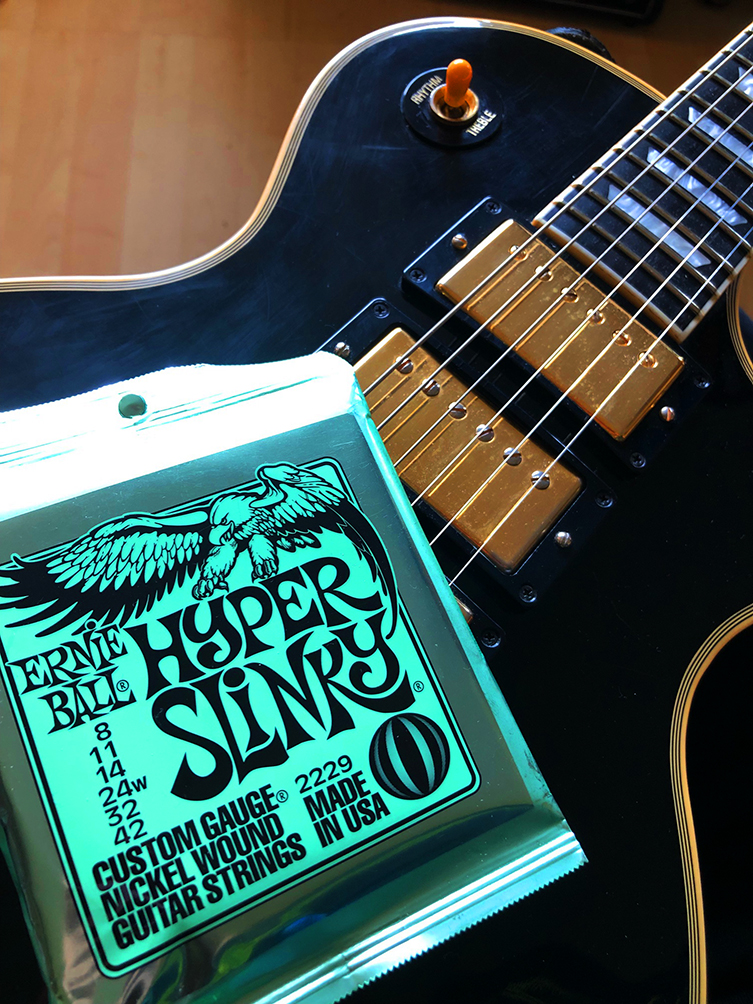
Why might this be? Well, once you bring overdrive or distortion into the equation, you’re dealing with an increasingly compressed, broken up signal. This minimises the tonal differences you’ll hear, especially considering string gauges. With a guitar plugged into a roaring amp, with the distortion piled right up, can you really hear the difference between a set of 9 gauge strings and a set of 10s?
Hybrid Gauges
We live in a world of choice, friends. A set of 9s is no longer just a set of 9s. Back in the day, your set of 9 gauge strings would go from 9-42, but nowadays we have 9-46, 9.5 (yes, gauge nine and a half has long been a thing) - 44 and many other iterations. These are hybrid gauges, and you can pretty much blame Ernie Ball for inventing them, and thereby giving us so much choice! You get gauge 8s with a variety of low strings, and you can choose a set of 10s in no less than SIX flavours. Don’t believe us? Check this lot out from Ernie Ball:
- Regular Slinky (10-46) - Your standard choice for gauge 10 strings
- Ultra Slinky (10-48) - Tighter for `Gibson scale’ guitars
- Skinny Top Heavy Bottom (10-52) - Good for drop-D grunge riffing
- Skinny Top Beefy Bottom (10-54) - Good for even lower drop riffing
- Mega Slinky (10.5-48) - a ten’s not enough but an eleven’s too much
- Mondo Slinky (10.5-52) - Slightly 'more' all round.
…and that’s not even getting into the 7 and 8 string sets! So, when we say ‘a set of tens’, we realise that could actually mean a number of things, hahaha! That said, a set of tens will generally refer to 10-46, the standard set. These hybrid sets are for your investigation one you’ve ruled out 9s or 11s, and just want to really zero in on some particular needs.
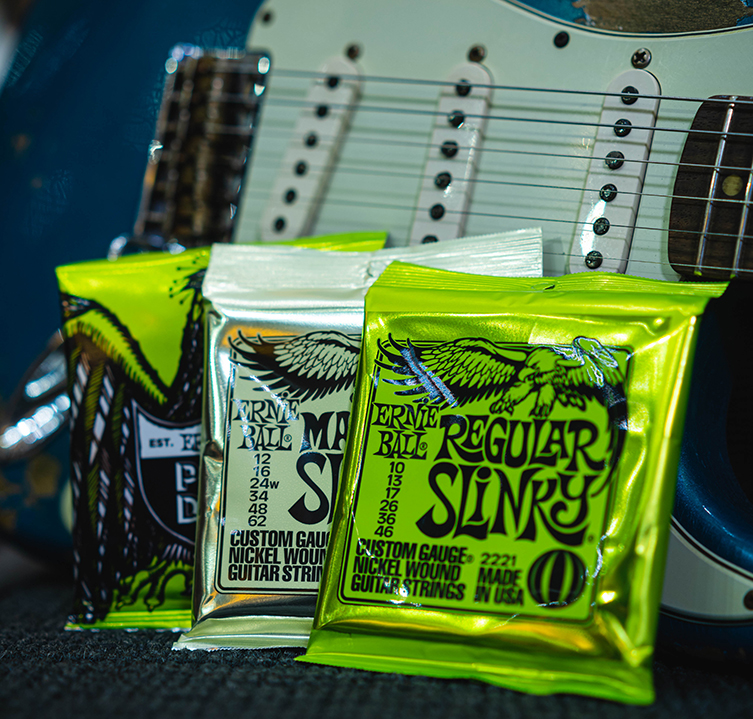
Which String Gauge is Right For Each Genre?
Alright then. Let’s round this up with some general direction on what to use for some different applications. Remember, you should use whatever seems like a good fit for you in terms of feel, response and tone. If you are hurting your hands when playing big bluesy bends, then consider going down a gauge. If you are playing detuned riffs and your low ‘E’ is flapping around like a piece of garden twine, perhaps think about going bigger.
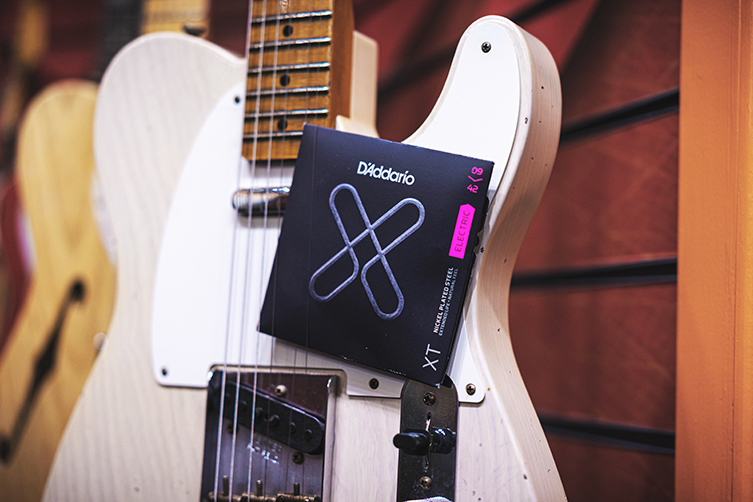
The great thing about guitar strings is that they are expendable anyway: they are consumables that will wear out and need to be replaced, so you have the freedom to try out different gauges.
But what do you need? Okay, some general guidelines…
- Rock & blues: 9s or 10s. There is no need to do the SRV gauge 13 thing, ok? But do use a hybrid set if you like to use drop-tunings.
- Jazz: For jazz, you can go as far as a 13-56 set, with a wound third for extra tone. This is because jazz generally doesn’t make use of bent notes, so your fingers won’t need to be Herculean to push them! Heavier strings sound warmer too, which is a big goal for jazzers. For a more versatile set, choose 11s, perhaps with a slightly more balanced .048 or so at the bottom.
- Funk/pop/general use: start with a set of 10-46: go lighter if they feel a bit much, otherwise stick with these!
- Hard rock/old school metal: 9s or 10s, same as rock & blues.
- Modern metal: hugely depends on your tuning! 10-52 for standard, and as much as 12-62 if you use baritone tunings, Drop A tuning or similar.
- Country: This really depends on your particular style, but we feel that standard tens are absolute fine for country playing.
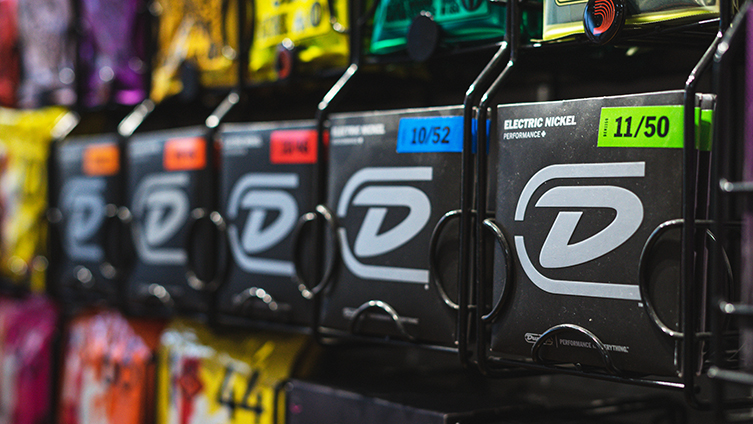
Always Curious, Always Searching
It’s good to keep curious about every element of your guitar. Things change, and it’s beneficial to form your own opinions about what you’re using, particularly through your own personal experience.. The bottom line is always going to be: ‘do I like this?’ If the answer is yes, that’s all that matters! Happy playing, and remember: we are always here to help!
Discover Our Range of Electric Guitar Strings


